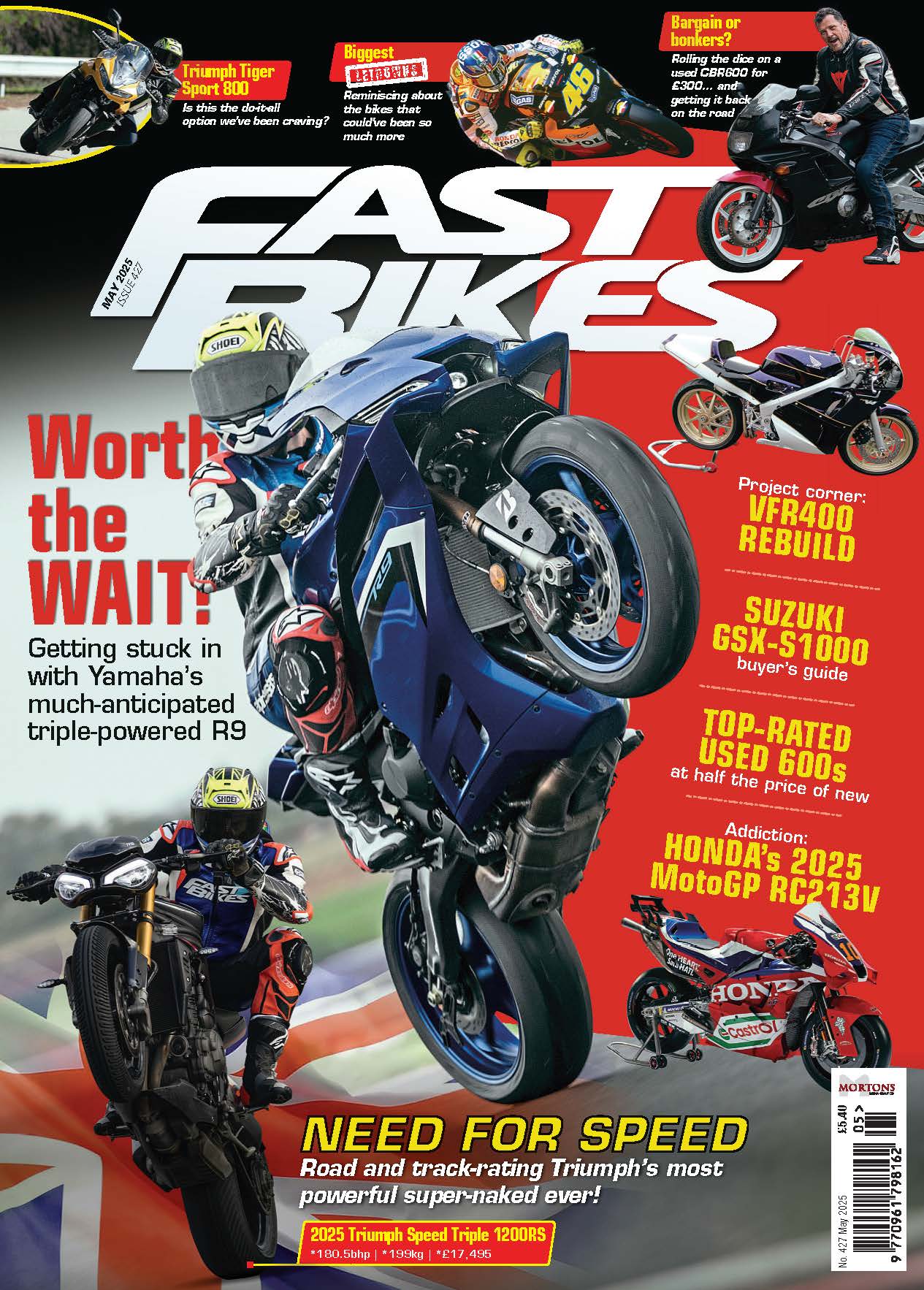Is the understated Suzuki GSX-S750 worth considering in the used market?
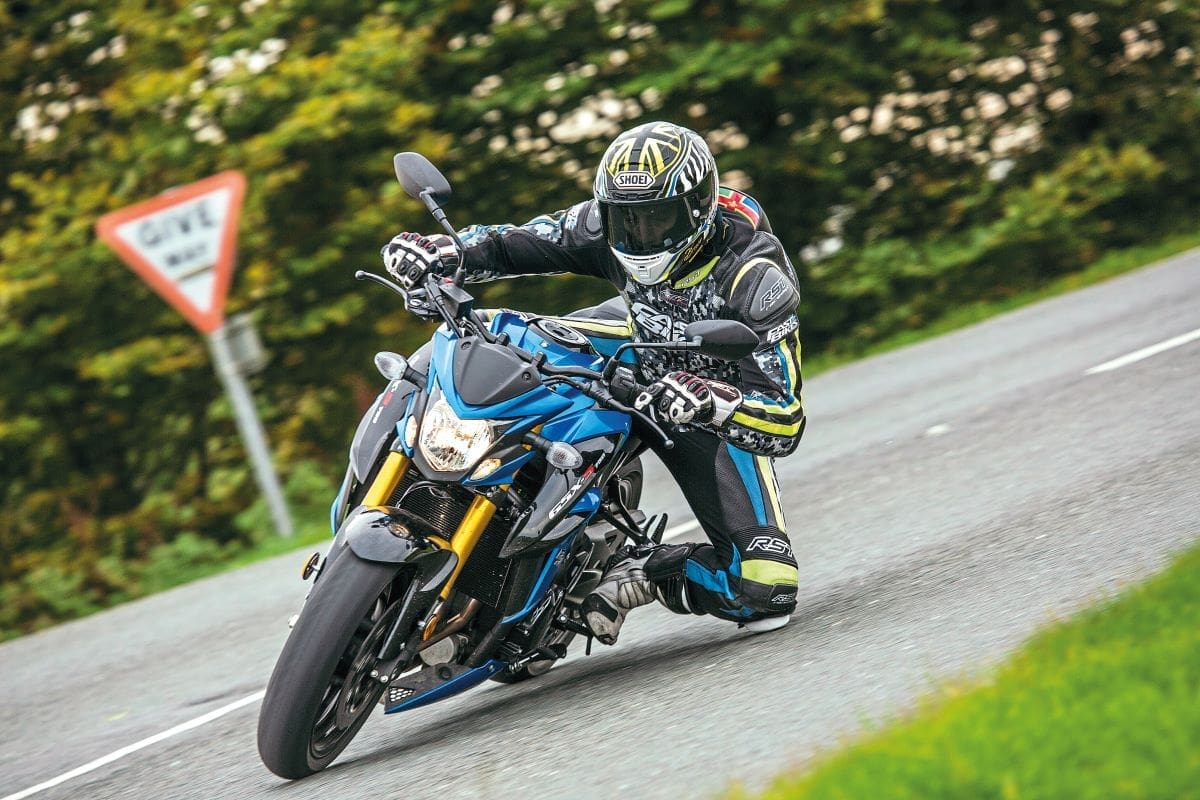
Words: Jon Urry Pics: FB Archive
The GSX-S750 arrived in 2017 with limited expectations and very little fanfare. Replacing the dowdy but surprisingly good-handling GSR750, the GSX-S750 aimed to up Suzuki’s middleweight’s game through revisions to not only its styling, but also to its handing, tech level and performance. While that all seemed very well and good on paper, the issue was more the fact that to achieve this goal, Suzuki hadn’t really done anything that ground-breaking. And that was a problem because the opposition had moved the goalposts…
Enjoy everything More Bikes by reading the monthly newspaper, Read FREE Online.
With no GSX-S600 model, the GSX-S750 was meant to fit into the firm’s model range as its middleweight contender. Priced at a mid-point between the budget middleweight models such as the best-selling Yamaha MT-07 and the class-leaders such as the Triumph Street triple 765 range, the GSX-S750 fell into an awkward middle ground that saw it too expensive and powerful to appeal to newer riders and yet not powerful or tech-heavy enough to tempt those away from the pricier models. The result, predictably, was a bike that failed to sell and quickly disappeared from Suzuki’s line-up, although not before some hefty discounting by dealers in an effort to shift unsold stock. However, that was then and this is now, with the GSX-S750 plentiful in the second-hand market. Is it worth considering if you are after a used middleweight bike? Let’s dig a bit deeper…
Starting with the GSX-S’s strong points, you have to look towards its engine. Effectively a tweaked GSR powerplant, the inline-four can trace its roots back to the 2005 GSX-R750, and although it fails to make anything like the power of the sportsbike (which produced a claimed 145bhp with 86Nm of torque), with a claimed 112bhp and 81.1Nm, it’s not that bad. But by the same token, it’s not that impressive either. To be fair, Suzuki did arm it with three-stage traction control, which can be deactivated. So, does the chassis hold any surprises? Again, not really.
A combination of tubular steel and twin-spar sections, Suzuki claimed the GSX-S’s chassis was designed for sporting comfort, and with its inverted forks and radial brakes (with ABS), it certainly looks the part. Until you dig a bit deeper and see that the forks and shock only offer preload adjustment, making them instantly appear a little budget. So, on paper there is a definite feel of Suzuki falling short with the GSX-S750 – but that’s why you need to take one for a test ride, because this bike isn’t all about its spec list…

Hop on a GSX-S750 and as soon as you pull away, it gives you a lovely feeling of balance and compliance. It’s one of those bikes that instantly feels very natural to ride, and simple things like the clear to read dash and light clutch action endear it to you. If you do a lot of town riding, the GSX is very easy to live with and has a pleasingly low seat height and relaxed riding stance. But even in town, you do spot something is a bit missing – and that’s low-end power.
Disappointingly sluggish in the low and midrange areas (despite lower gearing than the GSR it replaces), the GSX has none of the Street Triple’s instant punch, and while this does give it a beautiful throttle connection, it also makes it feel a bit uninspiring. Well, until you get it out on the open road and can feed it some revs…
Let the GSX-R-derived engine off its leash and it comes alive. In true GSX-R style, once you get over its sluggish midrange and into the top end of the rev range, it all starts to make sense and the GSX-S becomes a real hoot to ride. Keep it on the boil, feed it revs through its slick gearbox, and you will be grinning from ear to ear. Especially when the corners approach.

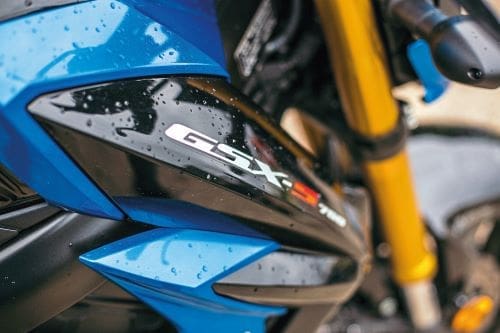
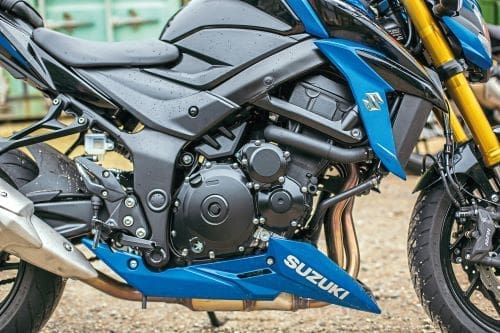
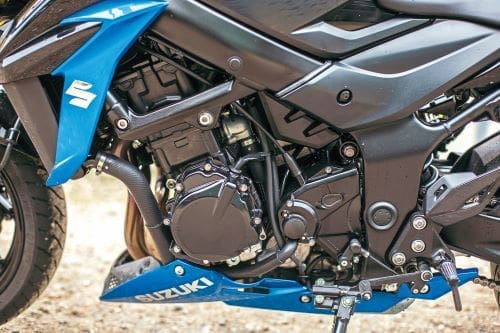
Considering its fairly low-spec chassis, you would be forgiven for not expecting much from the GSX-S – but this is where it over-delivers. Suzuki has shown time and time again it knows how to make a good chassis. The GSX-S is beautifully balanced, changes direction with minimal effort, and retains stability at all speeds. Yes, ultimately, it’s not as agile as the Triumph, but it is a bike you can hop on and really enjoy the best your local B roads have to offer. And the stock suspension is actually pretty good, delivering a confidence-inspiring ride quality and trust-worthy feeling, especially from the excellent front end. So, should we all rush out and buy a GSX-S750? That’s a tough question to answer…
You can get a good example of a GSX-S750 for about the £5000 area, which isn’t bad money at all. However, you could also get a (slightly tattier) GSX-S1000 for about the same (and that has more power) or a Street Triple RS for £1000 extra (and they are stunning). Where does the smart money go? If you want a solid and fun middleweight, the GSX-S750 is a good option but it will never really blow your skirt up in the way a Street Triple or an MT-09 will. There again, it is far less aggressive to ride than these two and also more comfortable. If you prioritise ease over fun, the GSX-S750 is a good bike; however, while a commendable machine, it is left lacking a bit in pizzaz…
Service history
The GSX-S has 3500-mile service intervals, which most dealers round up to 4000 miles. The minor and major services are nothing to worry about, but at 14,500 miles the valve clearances require checking, which is quite costly. Many used bike are approaching this number, so factor the cost of this into your offer.
Finish
The finish is okay on the GSX-S but not brilliant, and some owners have experienced paint rubbing off the tank quite easily. If the bike has tank-mounted grips fitted, be a little cautious as they may be hiding some marks. If you want to remove them, you are never 100% on how the paint will take that!
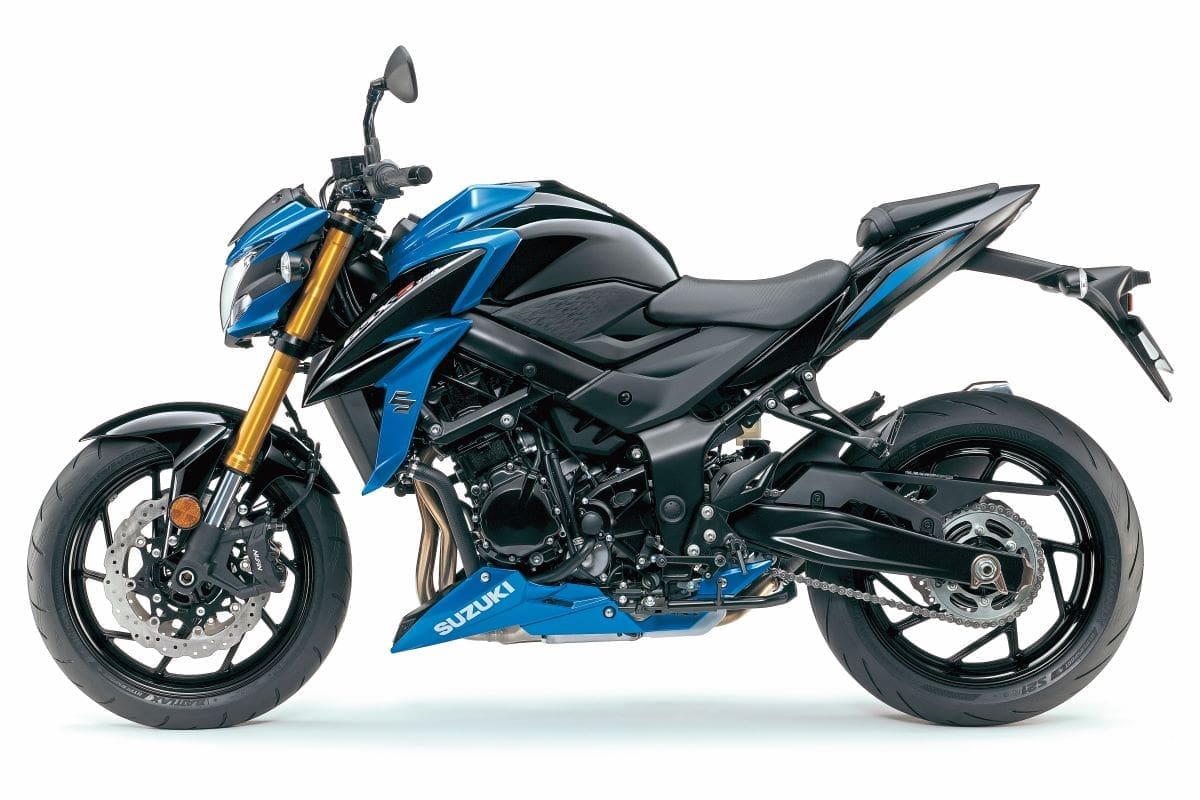
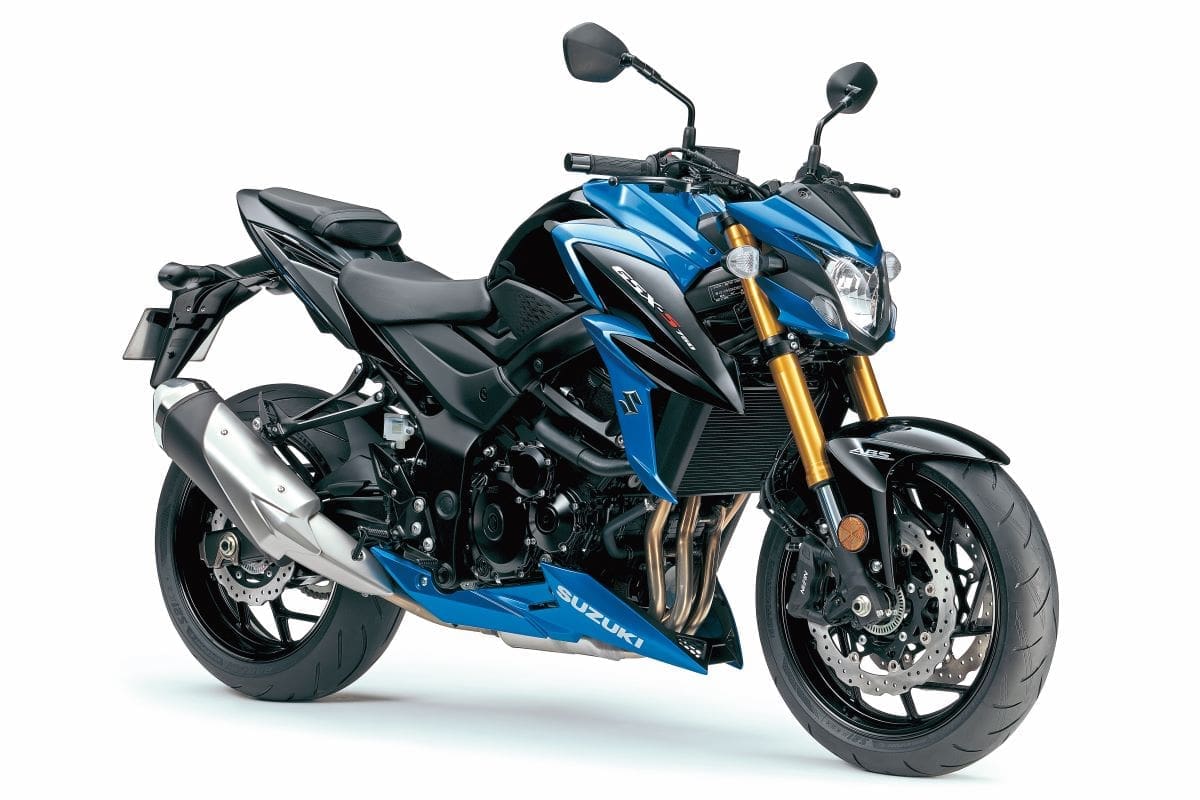
Brake lines
Suzuki recommends that the brake lines are changed every four years, and the fluid swapped every two. This is seldom, if ever, is adhered to, but it is worth updating the lines for braided steel items and adding quality aftermarket brake pads to give the stoppers a bit more bite.
Exhaust
The end can has a really nasty matt black finish which wears off quickly, and rust often shows through. The actual can is solid; it just looks tatty, very quickly. Look for signs of it being touched up using a rattle-can of paint by the previous owner…
Phantom
Suzuki released a GSX-S750 Phantom, which is simply a GSX-S750 with an all-black paint scheme, black forks, and a black exhaust cover. It isn’t a special edition model as such and was just a colour option, so don’t pay any extra for one.
Accessories
Many owners accessorise the GSX-S; it’s just one of those bikes. Always check carefully what has been added to the bike because not everyone wants a tail tidy, loud exhaust and so on; generally, stock is always best.
Go big?
The GSX-S1000 ran alongside the GSX-S750 and was much more popular. As it has been updated, used prices for the first generation start pleasingly low at £5000, making it worth considering over the GSX-S750. Just sort its poor shock and nasty fuel-injection…
HPI check
As the GSX-S was still on sale in Suzuki dealerships as late as 2021, there is a chance the bike may have some outstanding finance on it. Always perform an HPI check to ensure it has all been paid for and also to see if there is any untoward hidden history.
Verdict: 7/10
The GSX-S750 isn’t a bad bike but in a class with outstanding models in it, the Suzuki fails to really shine. A good solid performer, just not that remarkable.
+ Smooth engine, comfortable riding position, solid reliability
– A bit lethargic low-down and not that sporty handling

Tech Data
2017-2021 Suzuki GSX-S750
Engine
Type: 749cc, liquid-cooled, 16v, inline-four
Bore x stroke: 72mm x 46mm
Compression: 12.3:1
Fuelling: Electronic fuel Injection
Power: 112bhp @ 9500rpm
Torque: 81.1Nm @ 7250rpm
Chassis
Frame: Tubular steel/ twin-spar combination
F suspension: 41mm KYB inverted forks, adjustable preload
R suspension: Monoshock, 7-stage adjustable preload
Front brakes: 2 x four-piston radial Nissin calipers, 310mm petal discs. ABS
Rear brake: Single-piston caliper, 220mm disc. ABS
Dimensions
Wheelbase: 1455mm
Seat height: 820mm
Wet weight: 213kg
Fuel capacity: 16 litres
Also consider
2017 Triumph Street Triple RS
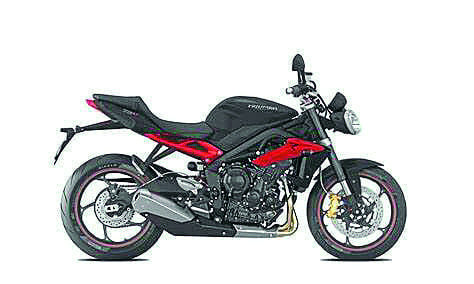
Private: £5500 Dealer: £6200
The top-spec Street Tiple model is absolutely brilliant fun to ride and has loads of eye-catching components. An incredible bike.
Engine: 765cc, l/c, 12v, inline-triple
Power: 121.2bhp @ 11,700rpm
Torque: 104Nm @ 10,800rpm
2017 Kawasaki Z900
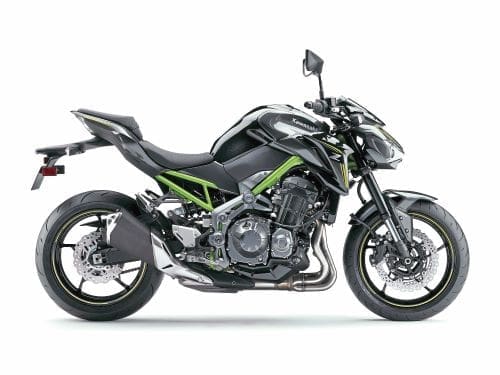
Private: £4999 Dealer: £5400
An overlooked and underrated naked, the Zed has a wonderfully smooth big-capacity inline-four motor and cool looks.
Engine: 948cc, l/c, 16v inline-four
Power: 123bhp @ 9500rpm
Torque: 97.6Nm @ 7700rpm
2017 Ducati Monster 821
Private: £4999 Dealer: £5500
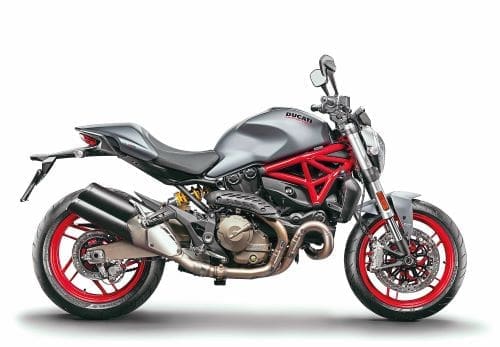
A classy but slightly expensive naked bike, the Monster looks great but doesn’t quite have the punch or handling to keep up.
Engine: 821cc, l/c, 8v, V-twin
Power: 109bhp @ 9250rpm
Torque: 86.8Nm @ 7750rpm
Advert
Enjoy everything More Bikes by reading the MoreBikes monthly newspaper. Click here to subscribe, or Read FREE Online.

